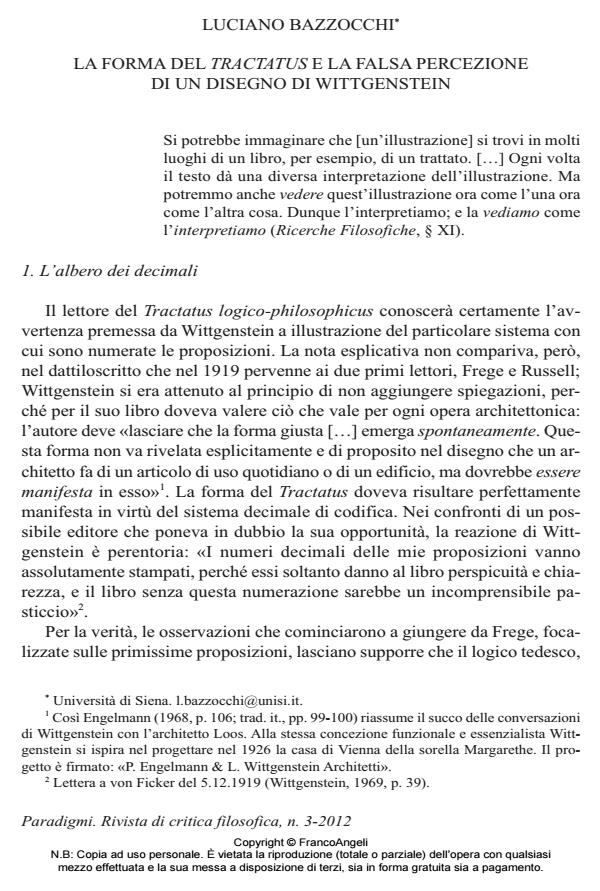The Form of the Tractatus and a False Perception of a Drawing by Wittgenstein
Journal title PARADIGMI
Author/s Luciano Bazzocchi
Publishing Year 2012 Issue 2012/3 Language Italian
Pages 31 P. 143-173 File size 1475 KB
DOI 10.3280/PARA2012-003009
DOI is like a bar code for intellectual property: to have more infomation
click here
Below, you can see the article first page
If you want to buy this article in PDF format, you can do it, following the instructions to buy download credits

FrancoAngeli is member of Publishers International Linking Association, Inc (PILA), a not-for-profit association which run the CrossRef service enabling links to and from online scholarly content.
The tree of the Tractatus, a true cognitive map, puts every argument at its place into the general plan of the work. If we read the book by succeeding stages of analysis, we can realise that the controversial section 5.6, about the ego and limits of lan- guage and world, is the factual outcome of commentary 5.1-5.6 on "truth-function". The way in which "logic fills the world" leads to the suggestion that "solipsism coincides with pure realism" (path 5.61-5.64); the elimination of an empirical "I" results in the abolition of all a priori forms of our experience - and of any a priori, indeed, outside logics (5.631-5.634); nor does the form of the visual field suggest the need of an observing eye (5.6331). In its last part, the article shows the original drawing of 5.6331 diagram and demonstrates how it was badly read and worse edited and reproduced. Because of its central role in usual readings of the whole section, this implies a substantial review of most of the traditional exegeses.
Keywords: Logical apriori, Self, Tractatus, Tree, Truth-function, Wittgenstein.
- Il luogo logico dell'io entro la mappa cognitiva del Tractatus di Wittgenstein Luciano Bazzocchi, in RIVISTA DI STORIA DELLA FILOSOFIA 2/2013 pp.273
DOI: 10.3280/SF2013-002004
Luciano Bazzocchi, La forma del Tractatus e la falsa percezione di un disegno di Wittgenstein in "PARADIGMI" 3/2012, pp 143-173, DOI: 10.3280/PARA2012-003009